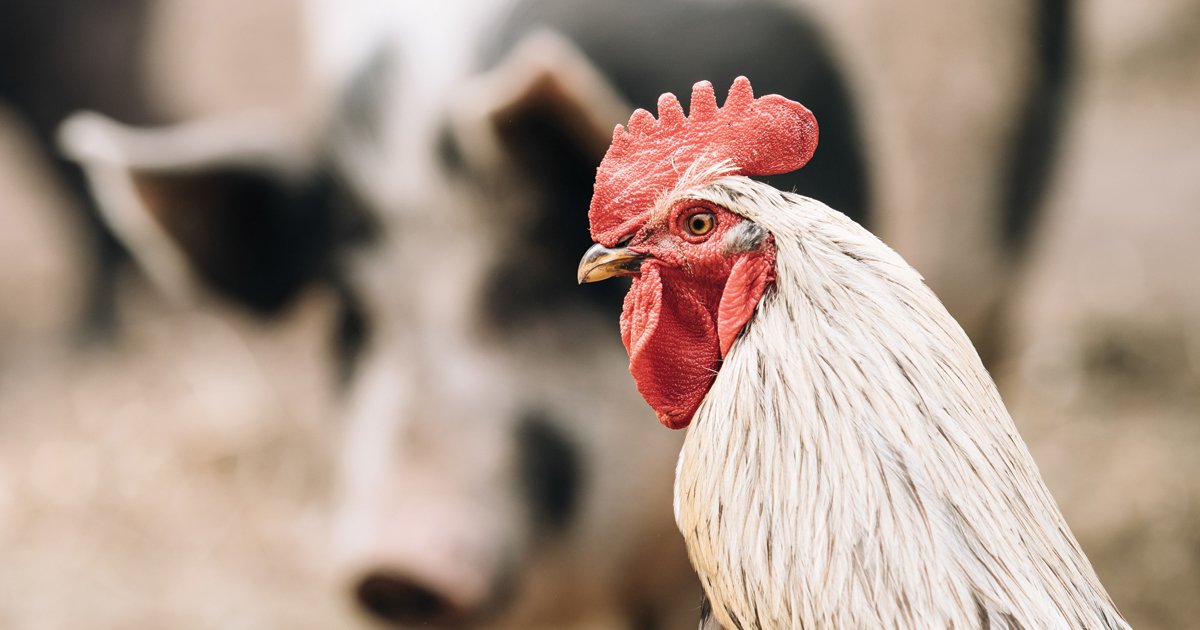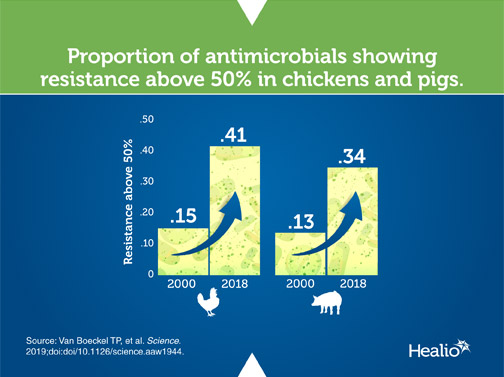Antibiotic resistance rising in farmyard chickens and pigs
Click Here to Manage Email Alerts
The proportion of pathogens infecting chickens and pigs in developing countries that are also significantly resistant to antibiotics grew from 2000 to 2018, with the highest levels of resistance seen in China and India, a newly published analysis showed.
Thomas P. Van Boeckel, PhD, a professor at the Institute for Environmental Decisions at ETH Zurich, and colleagues analyzed 901 point prevalence surveys of pathogens in developing countries to map resistance in animals. According to their report, which was published in Science, the analysis focused on resistance in Escherichia coli, Campylobacter species, nontyphoidal Salmonella species, and Staphylococcus aureus.
“[This study was prompted by] the general lack of systematic surveillance surveys in low- and middle-income countries,” Van Boeckel told Infectious Disease News. “Here [we] used alternative data sources — point prevalence surveys — to try draw a first overview situation on [antimicrobial resistance (AMR)] in animals in low- and middle-income countries.”
The analysis revealed that from 2000 to 2018, the proportion of antimicrobials showing resistance above 50% increased from 0.15 to 0.41 in chickens and from 0.13 to 0.34 in pigs. The authors said resistance plateaued between 0.12 and 0.23 in cattle.

According to Van Boeckel, the analysis also showed that China and India are the main hotspots of resistance among low- and middle-income countries and that Africa had low resistance levels in comparison.
The researchers said their initial assessment outlines three global priorities for action.
“First, our maps show regions that are poorly surveyed and where intensified sampling efforts could be most valuable. Second, our findings clearly indicate that the highest levels of AMR in animals are currently found in China and India. These countries should take immediate actions to preserve antimicrobials that are essential in human medicine by restricting their use in animal production,” they wrote.
“Third, high-income countries, where antimicrobials have been used on farms since the 1950s, should support the transition to sustainable animal production in [low- and middle-income countries] — for example, through a global fund to subsidize improvements in farm-level biosafety and biosecurity,” they concluded.

“Antibiotics are precious,” Van Boeckel said, “and we should stop wasting them in large quantities to raise animals faster or as surrogates for poor hygiene conditions.”
In a related editorial, Catrin E. Moore, DPhil, a researcher at Oxford’s Big Data Institute, said Van Boeckel and colleagues have taken the first step to examine resistance in animals by linking antimicrobial use and antimicrobial resistance data on farmed animals.
“A correlation between the global burden of AMR in humans and the hotspots of AMR in farmed animals and true burden of disease in humans together with appropriate interventions based on the National Action Plans could be the next step toward linking the burden of disease in a truly One Health approach.” – by Caitlyn Stulpin
Disclosures: Van Boeckel reports no relevant financial disclosures. Please see the full study for all other authors’ disclosures.

